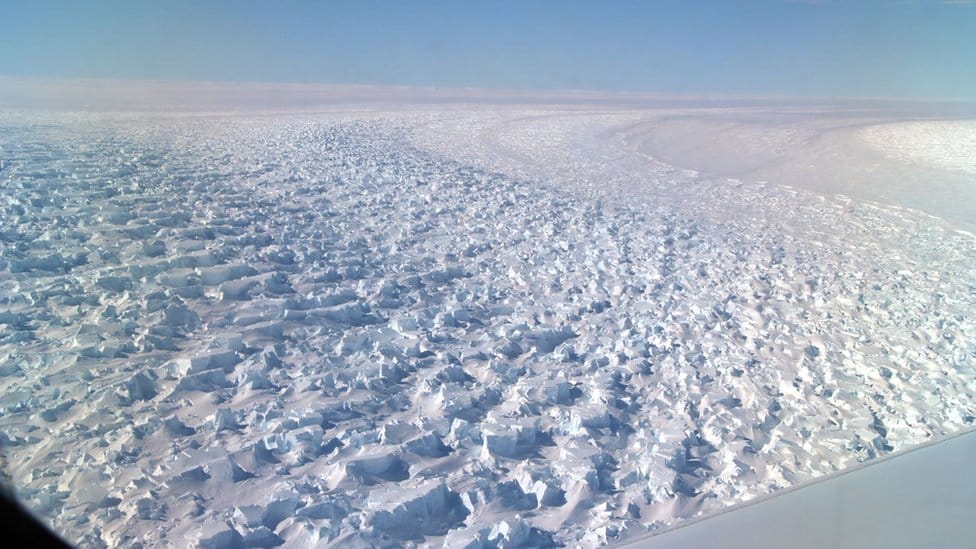Products You May Like
Denman Glacier. NASA / J. Sonntag
 Why you can trust us
Why you can trust us
Founded in 2005 as an Ohio-based environmental newspaper, EcoWatch is a digital platform dedicated to publishing quality, science-based content on environmental issues, causes, and solutions.
In recent years, scientists have begun to raise the alarm that East Antarctica isn’t as safe from the ravages of the climate crisis as previously believed.
Now, a study published in Geophysical Research Letters in September found that warm water is making its way into a dip beneath East Antarctica’s Denman Glacier, melting 70.8 billion tons of ice each year.
“These observations suggest that the Denman Glacier is potentially at risk from unstable retreat driven by warm water flowing into the cavity and melting the ice from below,” the study authors wrote.
The new research was the result of an investigation by Australia’s Commonwealth Scientific and Industrial Research Organisation (CSIRO), The Guardian reported. They had planned to use a float to measure the warm water sneaking under the Totten Glacier, but the float drifted towards the Denman Glacier instead. Beginning in December of 2020, the float then sent back measurements every five days for four months. This allowed the scientists to calculate how fast the floating part of the glacier was melting.

The Denman Glacier has enough water inside of it to contribute 1.5 meters (approximately five feet) to global sea level rise. Melting the floating part of the glacier, also known as the ice shelf, won’t actually contribute to sea level rise. However, the more it melts, the weaker it becomes, potentially ceasing to act as an effective barrier to the ice on the Antarctic continent that does contribute to sea level rise.
The East Antarctic ice sheet holds 80 percent of the world’s ice and, the last time it collapsed, it raised global sea levels by more than 10 feet, as National Geographic reported. At that point around 400,000 years ago, carbon dioxide levels in the atmosphere were at only 300 parts per million (ppm). Today, they are more than 100 ppm higher.
Scientists had long thought the East Antarctic ice sheet was more protected from melt than the West Antarctic ice sheet because it covers the South Pole and mostly sits on frozen ground, not warming ocean water, National Geographic explained. But that assessment has changed in recent years. The Totten Glacier, which is the largest in East Antarctica, is also melting quickly and contains enough water to raise sea levels by 11.5 feet on its own, according to the Antarctic and Southern Ocean Coalition. East Antarctica as a whole contains enough ice to contribute around 92 feet to sea level rise.
This isn’t the first time the alarm has been sounced about the Denman Glacier in particular. A 2020 study also published in Geophysical Research Letters found it had retreated around three miles in 22 years. However, the latest study is the first to report on the glacier with measurements taken directly from the ocean, paper co-author and CSIRO fellow Stephen Rintoul told The Guardian.
“One of the take-home messages is when we’re looking at how much sea level is going to rise into the future, we do need to take east Antarctica into account, as well as west Antarctica,” he said.
Subscribe to get exclusive updates in our daily newsletter!
By signing up, you agree to the Terms of Use and Privacy Policy & to receive electronic communications from EcoWatch Media Group, which may include marketing promotions, advertisements and sponsored content.
